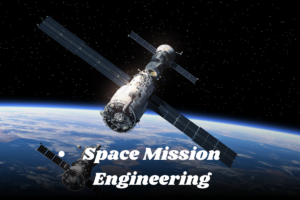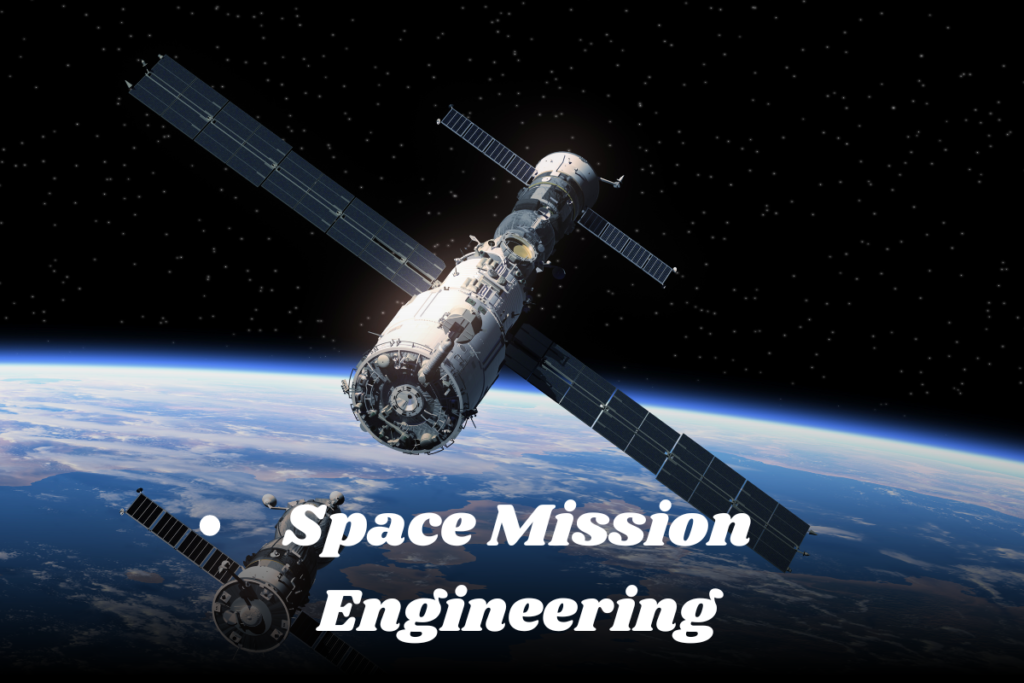Space Mission Engineering: Crafting the Future of Space Exploration
Introduction to Space Mission Engineering
Space mission engineering is the cornerstone of modern space exploration, a field that has evolved dramatically since the first human-made object left Earth’s atmosphere. The discipline combines science, technology, and engineering to design, develop, and manage space missions that expand our understanding of the universe.
The Evolution of Space Exploration
Space exploration has a rich history, beginning with early milestones that laid the foundation for today’s complex missions.
Early Milestones in Space Exploration
The space race between the United States and the Soviet Union during the Cold War era marked the beginning of space exploration. Milestones such as the launch of Sputnik, the first artificial satellite, and the Apollo moon landings showcased the potential of space technology.
Modern Space Missions and Their Impact
In recent decades, space missions have advanced significantly, with missions like the Mars rovers, the Hubble Space Telescope, and the International Space Station (ISS) pushing the boundaries of human knowledge and capabilities. These missions have not only expanded our understanding of space but also driven technological innovation on Earth.
The Role of Space Mission Engineering
Space mission engineering is at the heart of these achievements, ensuring that every aspect of a mission, from conception to execution, is meticulously planned and executed.
Defining Space Mission Engineering
Space mission engineering involves the integration of various engineering disciplines, including aerospace, mechanical, electrical, and systems engineering, to create a cohesive plan for a space mission. It encompasses everything from the initial concept to the final decommissioning of a mission.
Importance in the Success of Space Missions
The success of any space mission relies heavily on the precision and expertise of space mission engineers. Their role is crucial in overcoming the numerous challenges posed by the harsh environment of space, ensuring that missions are not only successful but also safe and cost-effective.
Key Components of Space Mission Engineering
Space mission engineering is a multidisciplinary field that includes several key components, each critical to the success of a mission.
Mission Design and Planning
Before a mission can be launched, it must be carefully designed and planned.
Understanding Mission Objectives
The first step in mission planning is to clearly define the objectives. Whether it’s exploring a new planet, studying the effects of microgravity, or deploying a satellite, understanding the mission’s goals is essential.
Feasibility Studies and Risk Assessment
Once the objectives are clear, feasibility studies are conducted to assess the practicality of the mission. This includes evaluating the available technology, budget, and time constraints, as well as conducting risk assessments to identify potential challenges.
Spacecraft Design and Development
Designing and developing the spacecraft is one of the most complex aspects of space mission engineering.
Structural Engineering
The spacecraft’s structure must be designed to withstand the harsh conditions of space, including extreme temperatures, radiation, and the stresses of launch and re-entry.
Propulsion Systems
Propulsion systems are the heart of any spacecraft, enabling it to leave Earth’s atmosphere and navigate space. Engineers must design these systems to be powerful, reliable, and efficient.
Onboard Systems and Instrumentation
The onboard systems and instrumentation are the brain of the spacecraft, responsible for everything from navigation to data collection. These systems must be designed with redundancy to ensure mission success even if a component fails.
Launch Systems Engineering
The launch is one of the most critical phases of a space mission, requiring precise engineering and coordination.
Launch Vehicle Selection
Choosing the right launch vehicle is essential for the success of the mission. Engineers must consider the payload size, mission trajectory, and destination when selecting a launch vehicle.
Payload Integration
Once the launch vehicle is selected, the payload must be integrated. This involves securing the spacecraft within the launch vehicle and ensuring that all systems are functioning correctly.
Launch Operations
The final step in launch systems engineering is the actual launch operation. This phase involves close coordination between engineers, mission control, and the launch team to ensure a smooth and successful launch.
The Phases of a Space Mission
Space missions are divided into several phases, each requiring careful planning and execution.
Conceptual Phase
The conceptual phase is where the mission begins to take shape.
Initial Idea and Mission Concept
This phase involves brainstorming and developing the initial mission concept. Engineers and scientists collaborate to define the mission’s goals and outline a preliminary plan.
Preliminary Design Review
Once the mission concept is developed, it undergoes a preliminary design review. This review evaluates the feasibility of the mission and identifies potential risks and challenges.
Development Phase
In the development phase, the mission begins to move from concept to reality.
Detailed Design and Engineering
During this phase, engineers create detailed designs for the spacecraft, launch vehicle, and mission operations. This includes developing blueprints, specifications, and prototypes.
Testing and Validation
Before the mission can proceed, all components must undergo rigorous testing and validation. This ensures that everything is functioning correctly and that the mission is ready for launch.
Implementation Phase
The implementation phase is when the mission is launched and carried out.
Launch Preparation
This phase involves final preparations for the launch, including integrating the spacecraft with the launch vehicle, conducting final system checks, and rehearsing launch operations.
Mission Operations
Once the spacecraft is in space, mission operations begin. This includes monitoring the spacecraft, collecting data, and adjusting the mission plan as needed.
Data Collection and Analysis
One of the primary goals of any space mission is to collect data. This phase involves gathering and analyzing data from the spacecraft’s instruments to achieve the mission’s objectives.
#AICarAccidentLawyer #AIBarrels #MissionSpaceMotionSickness #AddObjectOnImageWithAi
Challenges in Space Mission Engineering
Space mission engineering is a highly challenging field, with numerous obstacles to overcome.
Technical Challenges
The technical challenges of space missions are immense, requiring innovative solutions.
Harsh Space Environment
Space is an extremely hostile environment, with extreme temperatures, high levels of radiation, and the vacuum of space posing significant challenges for spacecraft.
Communication Delays and Constraints
Communication between Earth and a spacecraft can be delayed by several minutes or even hours, depending on the mission’s distance. Engineers must design systems that can operate autonomously and handle communication delays.
Budgetary and Time Constraints
Budget and time constraints are significant factors in the success of space missions.
Cost Management
Space missions are expensive, and managing costs while maintaining mission objectives is a constant challenge for engineers.
Meeting Deadlines
Space missions often have strict deadlines, whether due to budget constraints or launch windows. Engineers must carefully manage time to ensure that the mission stays on track.
Human Factors
Human factors are another critical consideration in space mission engineering, especially for manned missions.
Crew Safety and Well-being
Ensuring the safety and well-being of the crew is the top priority for any manned mission. This includes designing life support systems, monitoring health, and providing psychological support.
Psychological Challenges
Space is an isolating environment, and the psychological challenges of long-duration missions can be significant. Engineers must consider these factors when designing missions to ensure the crew remains healthy and focused.
Future Trends in Space Mission Engineering
The future of space mission engineering is exciting, with several emerging trends set to revolutionize the field.
Reusable Launch Systems
One of the most promising trends is the development of reusable launch systems, which can significantly reduce the cost of space missions.
Autonomous Spacecraft
Autonomous spacecraft, capable of operating without human intervention, are becoming increasingly important for deep space exploration.

Deep Space Exploration
Missions to explore deep space, including missions to Mars and beyond, are at the forefront of space mission engineering.
Space Mining and Resource Utilization
The future of space exploration may also involve space mining and the utilization of resources from other planets and asteroids, opening up new possibilities for human expansion into the solar system.
Conclusion
Space mission engineering is a dynamic and challenging field that plays a crucial role in the exploration of space. As technology advances, the future of space missions promises to be even more exciting, with new challenges and opportunities on the horizon.
FAQs
What is space mission engineering?
Space mission engineering involves the design, development, and management of space missions, integrating various engineering disciplines to ensure mission success.
How do engineers ensure the safety of space missions?
Engineers ensure safety through rigorous testing, redundancy in systems, and careful planning to mitigate risks and challenges posed by the harsh space environment.
What are the main phases of a space mission?
The main phases of a space mission include the conceptual phase, development phase, and implementation phase, each involving detailed planning and execution.
What challenges do space mission engineers face?
Challenges include technical obstacles like the harsh space environment, budgetary and time constraints, and human factors such as crew safety and psychological well-being.
What advancements are shaping the future of space exploration?
Advancements like reusable launch systems, autonomous spacecraft, deep space exploration, and space mining are shaping the future of space exploration.


